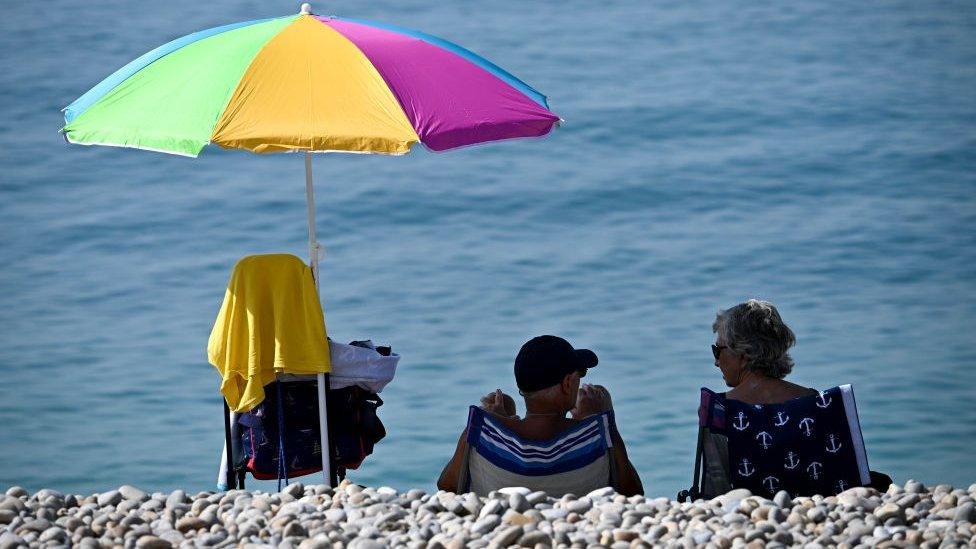UK heatwaves could get names like storms
- Published
- comments

UK heatwaves could be given names this year to increase awareness of the risks they carry.
The idea has been put forward by a group of MPs and is similar to how storms are named, which is said to help people prepare for them better.
Extreme heatwaves become more likely as global average temperatures rise.
Disruptions to transport are common in extreme heat which may impact people's travels, working conditions and health.
The UK's highest temperatures were recorded in Leicestershire in 2022 where a high of 40.3C was recorded.
People can protect themselves from heat-related illnesses by staying inside, wearing sun cream and a hat if they need to go out, drink lots of water and avoid the sun during the hottest parts of the day.
In September 2023, the temperature reached 30C for seven days in a row making it the longest and hottest September heatwave in the UK on record.
What is a heatwave?

Staying in the shade is always a good idea...
According to the Met Office, a heatwave is classed as an extended period of hot weather in an area where temperatures are greater than those typically expected at a certain time of year.
In the UK, a heatwave happens when at least three consecutive days of heat are recorded in a particular location, with the maximum temperature each day either reaching or going beyond a specific threshold.
These thresholds differ depending on the region, but an average threshold temperature in the UK is 30C by day and 15C overnight.
Hot weather, especially when prolonged, with warm nights, can have effects on people's health
At the moment, heatwaves are given colour warnings which rank from 'green' (be aware of heat and have a plan if temperature increase), to 'red' which is when a prolonged hot spell becomes severe and could end up impacting people both inside and outside of high-risk groups.
